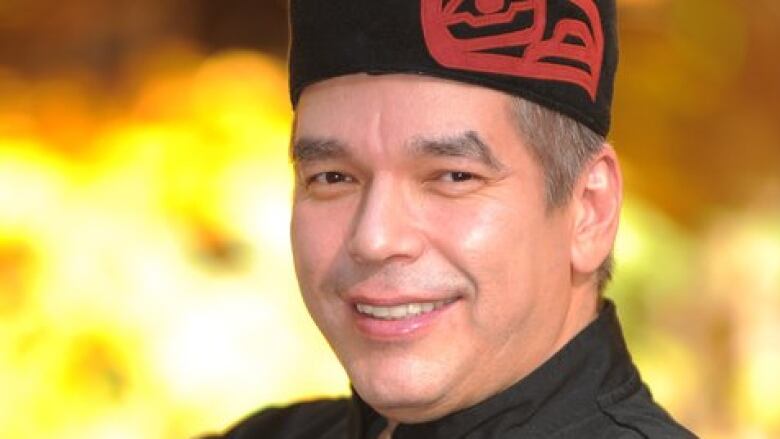Thanksgiving food inspired by dishes developed by First Nations
Many family favourites on dinner tables this weekend have roots in indigenous cuisine

Many family favourites on Thanksgiving dinner tables across Canada trace their origins to food made by First Nations peoples long before Europeans set foot in North America.
Besides fish and game such as buffalo, elk and caribou, native feasts held centuries ago at various times of year would haveincluded roasted fowl such as pheasant, grouse and turkey, rootvegetables such as turnips, potatoes and carrots, the "threesisters" of corn, beans and squash (including pumpkin), nuts andberries. In some locales, wild rice and cranberries might have beenserved, and on the coasts and in the far north seafood would havebeen a staple.

As they were passed from generation to generation, they became"traditional," he says, explaining this sharing of knowledge andfoods is very much in the spirit of First Nations culture.
A recipe I give you, it's not a secret recipe. It's to share. You'regoing to take it and add your own things to it and share it withother people and so on. It stays alive that way.- DavidWolfman
He is a member of the Xaxli'p First Nation in British Columbia,but "I grew up as an urban native (in Toronto) so I had to learn myculture." He remembers as a boy trying to take notes as an eldershared stories and being admonished by an aunt to put the pencil andpaper away. "You should be listening," she said.
"Later on I realized (what she meant was) that the storiesshared with you are given to you to share. They're not given to youto keep. That was one of the things that really stuck in my head. Soa recipe I give you, it's not a secret recipe. It's to share. You'regoing to take it and add your own things to it and share it withother people and so on. It stays alive that way."
Of course, the recipes and cooking methods have changed.

"They would dig out pits in the ground and smoulder rocks overthe fire. Then they would put some type of green leaves over top andjust keep layering it with food. Whatever took the longest to cookwent on the bottom, so there would be a lot of stuff like deer andsalmon. Root vegetables and potatoes would be closer to the top. Itwould be an all-day cooking process," she says and if many peoplewere to be fed, the pit could be huge.
This obviously isn't practical for the two locations of theKekuli Cafe she and her husband own in B.C. But her menu isdefinitely based on aboriginal traditions, she says.
Her specialty is bannock, a flat or biscuit-type of bread and astaple of aboriginal cuisine that can be baked or cooked in a fryingpan. There's some suggestion it was adapted from Scottish settlers.
It's featured in breakfast fare, as bannock burgers and sandwichesand she even offers a berry-bannock pudding for dessert.
When she opened her first cafe in Westbank in 2009, "It was kindof scary," she says. She knew of only one other aboriginalrestaurant, a high-end spot in Vancouver that has closed, although afew more have opened since.
"I didn't know what to tell people when they asked, 'What kindof food do you serve?' 'Well, we serve First Nations food.' 'Well,what is that?'
"The bannock was a theme. We had salmon, venison, buffalo, theclassics, burgers and fries. We make all our own sauces andvinaigrettes so we really try to have an aboriginal twist to ourfoods."
Her success with both natives and non-natives allowed her to opena second location in Merritt in August.
Wolfman sees a huge resurgence of interest in aboriginal foodreflected in the "eat local" and "100-mile diet" movements.Historically, natives may have had no choice, but now large numbers of Canadians see the wisdom, both economically and in terms of tasteand freshness, of eating only locally grown and produced food, hesays.
While there may not be a proliferation of restaurants with exclusively aboriginal-themed menus, more and more high-end
establishments are introducing dishes featuring typically aboriginalingredients. "They're serving bison, arctic char, those sort ofthings. The more people are aware of foods, the greater the demandwill become."
For the man who calls his cooking "aboriginal fusion:traditional foods with a modern twist," it's fine if those dishes
are updated.
"What I do is respecting and understanding traditional foods butserving them in a modern way."
Bond says that on a cross-country car trip with her husband inSeptember, "I was thinking, 'what is Canadian food?' Everythingthat is Canadian is so simplistic, simple foods from the land, likethe blueberries, the maple syrup from the trees, salmon from theriver. It's that home-style comfort Canadians know."
That's a lot to be thankful for.












_(720p).jpg)


 OFFICIAL HD MUSIC VIDEO.jpg)
.jpg)



























































































